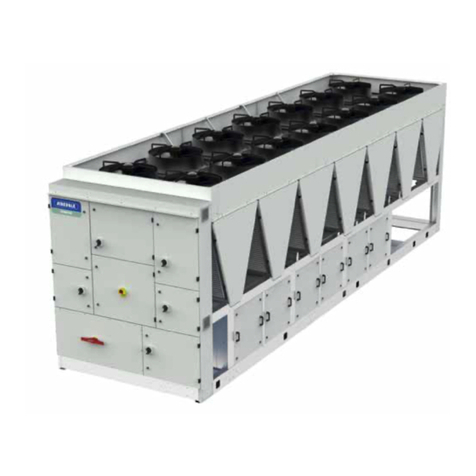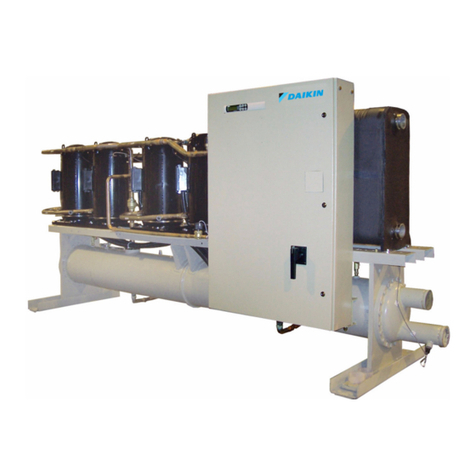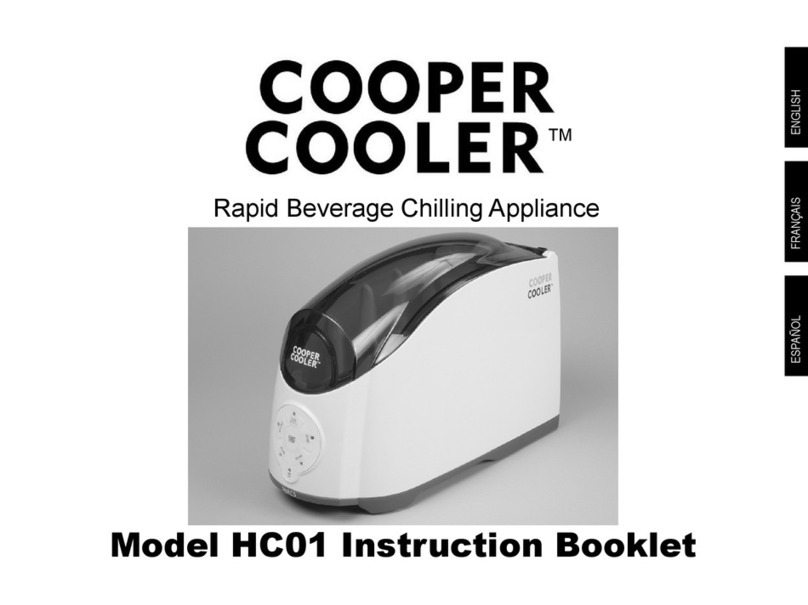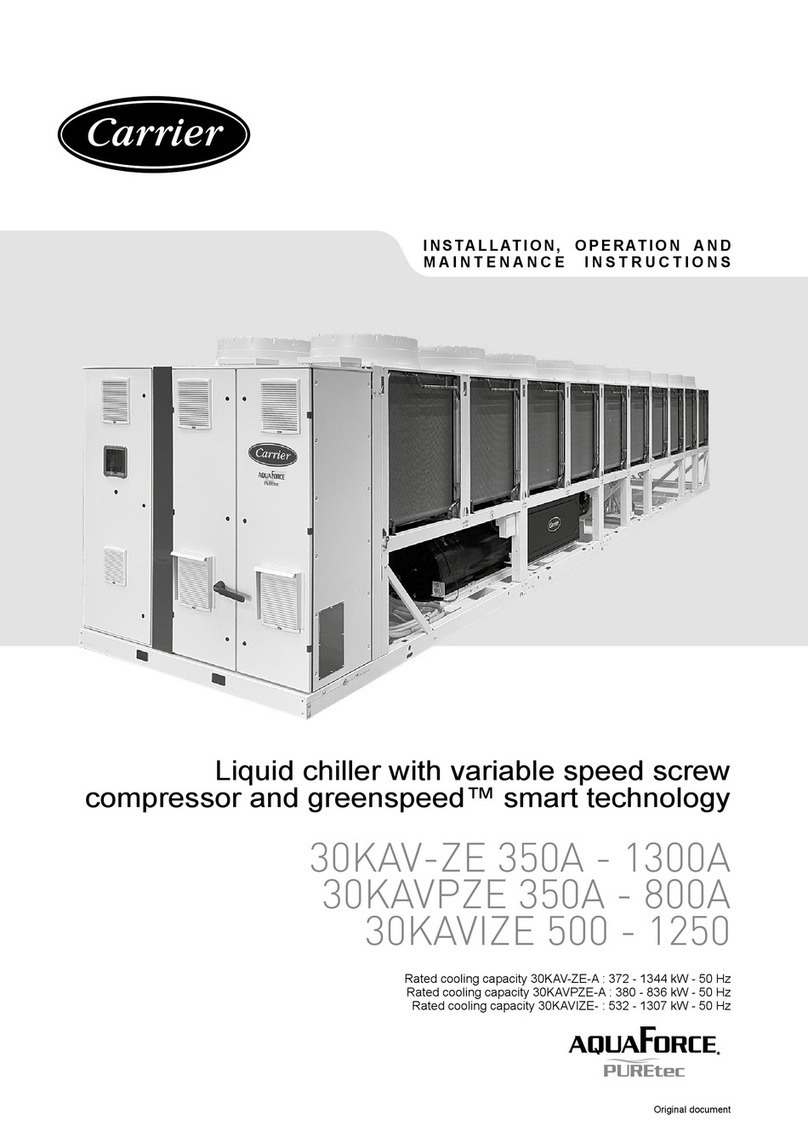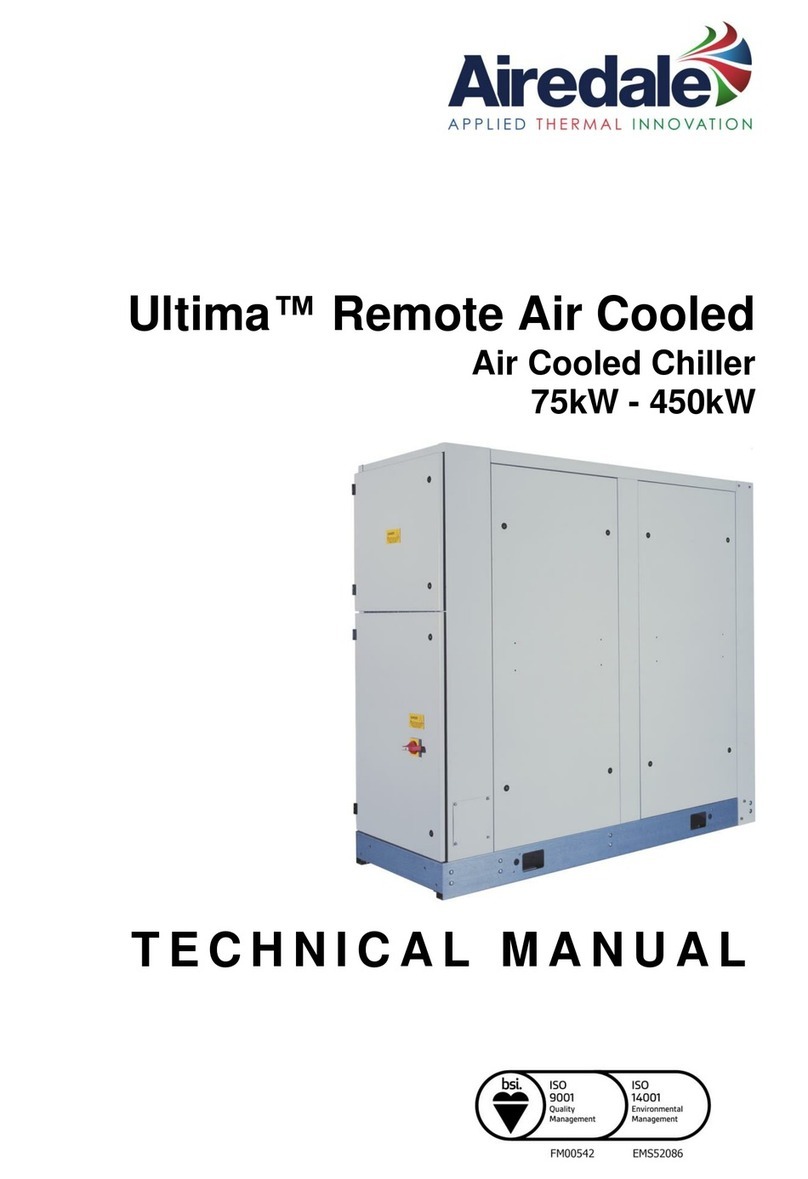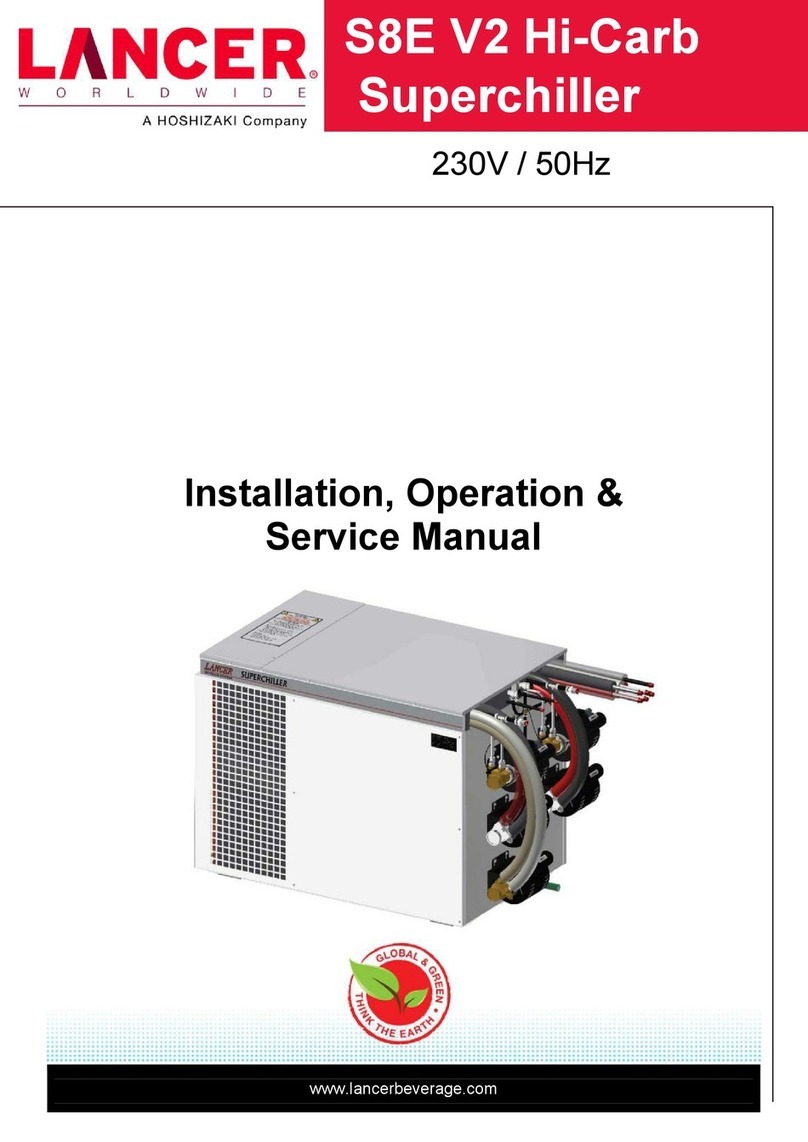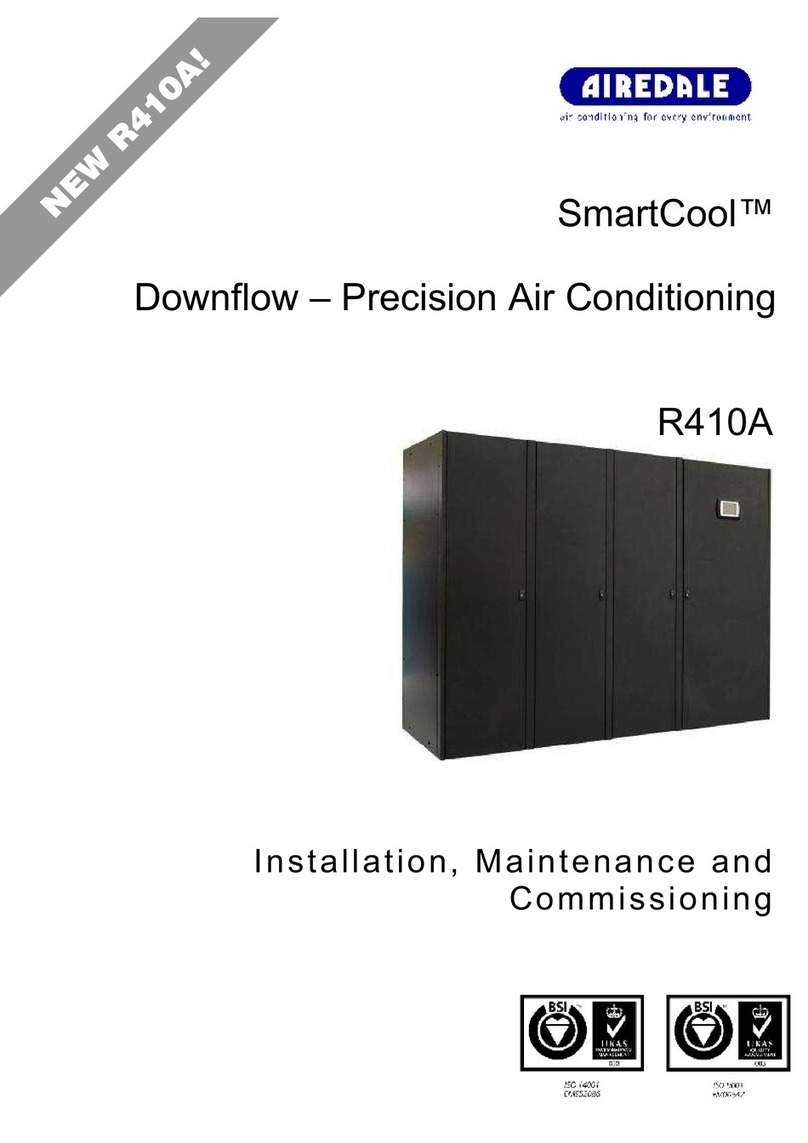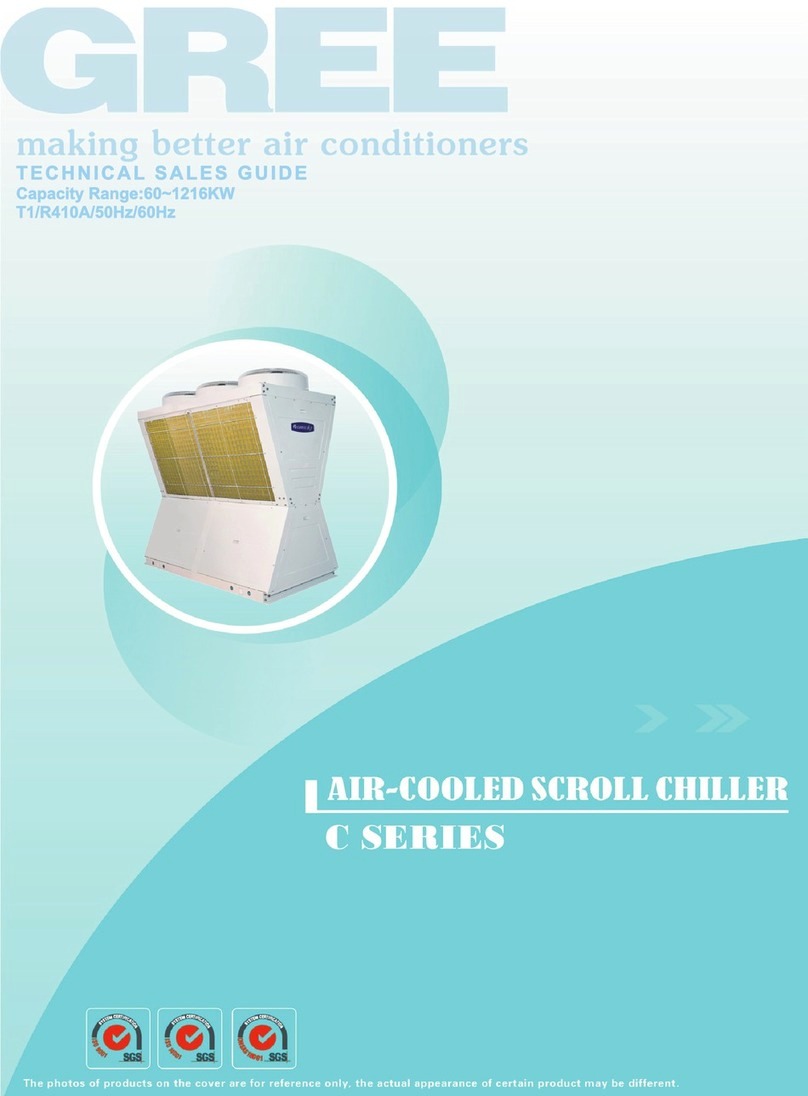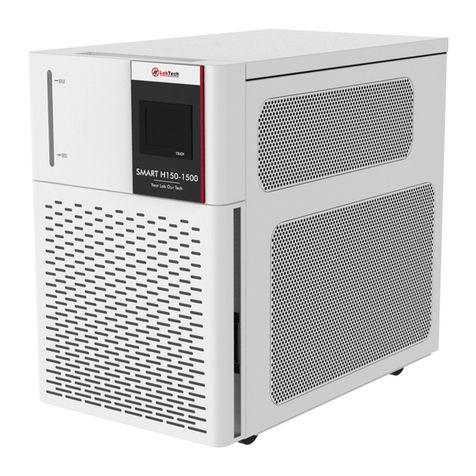Page 7
3- FRESH WATER CIRCUIT
CWS Basic 121-161-201-251
When the circuit is under pressure with the antifreeze solution, purge the air as follows:
Bleed the entire circuit (manifold, fan coils and all the other purging points) starting from the lowest level
and keeping the circuit pressure at 1,5 Bars.
This purging must be done without running the pump.
Repeat all points, until no more air comes out from the bleeding valves, still keeping the pressure at 1,5
Bars.
Set to "Off" position each compressor switch.
Then check the sea-water intake is open and start the unit in "Cool" mode; both pumps will run.
Let the fresh water pump run for 30 seconds, then stops the system and bleed again all points, keeping
the pressure at 1,5 Bars.
Bleeding can be considered over when no more air is coming off the purging points and the fresh water
circulation pump runs even and quiet.
We strongly recommend that a special "air bleeding vessel" be installed in the fresh water circuit, just after
the pump outlet. This device will dramatically reduce the bleeding procedure and will also keep the system
free of air during its life. The "air bleeding vessel" is available in several sizes.
3.3- Pressurizing the fresh
The gauge set installed in the fresh water circuit is equipped with two charging ports, each (H-H1)
with a manual valve and an automatic check valve, which prevents the internal charge to come back
to the pressurized sanitary circuit in case of mistake. Use one of the two valves to charge and pres-
surize the circuit with fresh water up to 1,5 Bars, checking it with the pressure gauge. This port must
be permanently connected to the yacht sanitary water system.
Check that the circuit keeps the pressure over a certain period of time indicating that it is leak proof.
As you are sure that the circuit is leak proof, reduce the pressure to make room and add antifreeze
to the circuit.
3.4- Antifreeze solution
We suggest two methods for filling the fresh water circuit with antifreeze:
a) Calculate approximately the circuit capacity, fill it with water and add to it 20% of antifreeze, using
the second charging valve by gravity or using a pressure pump. Then connect the circuit to the sani-
tary water circuit of the vessel, pressurize up to 1,5 Bars and start purging the air. It is obvious that
if purging will be difficult, the percentage of antifreeze will decrease, as more water will be needed to
fill the circuit, therefore more antifreeze must be added to the circuit.
b) Empty the circuit from the water used for the leak test. Prepare the antifreeze solution in the quan-
tity needed to fill the circuit, made with 20% of antifreeze liquid; fill the circuit, using a pressure pump.
Then proceed with purging air and topping up the pressure using the solution.
water circuit
3.5- Air bleeding




















